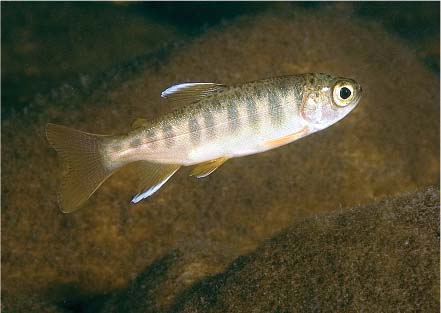All Issues
Science briefs
Publication Information
California Agriculture 63(1):5-5.
Published January 01, 2009
PDF | Citation | Permissions
Full text
California salmonids face extinction
California's native salmonids are in precipitous decline and are teetering toward the brink of extinction, according to a new report by Peter Moyle, UC Davis professor and expert on California water systems and fish.
SOS: California's Native Fish Crisis, the first-ever comprehensive report on the status of California's 32 native fish species (salmon, steelhead and trout), was commissioned by the nonprofit organization CalTrout.
“The fish don't lie,” says Moyle, who wrote the report with Joshua A. Israel and Sabra E. Purdy, all of the Center for Watershed Sciences at UC Davis. “The story they tell is that California's environment is unraveling. Their demise is symptomatic of a much larger water crisis that, unless addressed, will severely affect every Californian.”
The November 2008 report included the following findings:
-
If present trends continue, 65% of native salmonids will be extinct within 100 years.
-
Sixty-five percent of the species headed toward extinction are found only in California.
-
Of the state's 22 anadromous fish species (which spawn in freshwater and live most of their adult lives in the ocean), 59% are in danger of extinction.
-
Of the state's nine living native inland fish, 78% are in danger of extinction.
All of the species studied support, or have previously supported, major recreational and commercial fisheries and provide economic and cultural value to Californians, Moyle says. Key stressors on fish include dams, agricultural and grazing practices, development, mining, railroads, logging, some recreational uses, illegal harvesting of native fish, reliance on fish hatcheries and invasive species. Global warming is also playing an important role, the report says, as salmonids are particularly sensitive to changes in water temperature.
Of the 32 taxa analyzed, one is extinct in California and 14 are listed as state and/or federally threatened or endangered. Pink and chum salmon, southern steelhead and coho salmon face the greatest immediate threat of extinction. Other species fighting for survival include both summer and winter runs of the Northern California Coast steelhead; Central Valley, South/Central California Coast and Central Coast steelhead; Little Kern golden, Lahontan cutthroat and Paiute cutthroat trout; and California Coast, Sacramento winter-run and Central Valley spring-run chinook salmon.
“This doesn't have to happen,” Moyle wrote in the Sacramento Bee. “We have to leave more water for fish while protecting their diverse habitats. We need to engage in more large-scale restoration projects.”
For more information: www.caltrout.org





